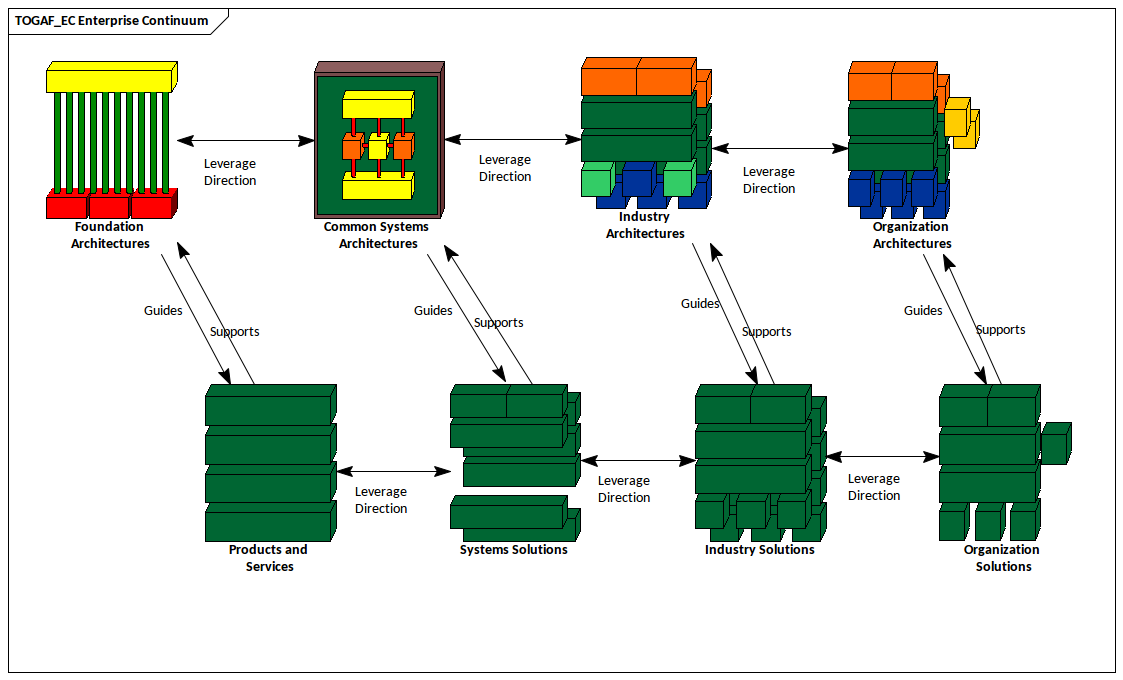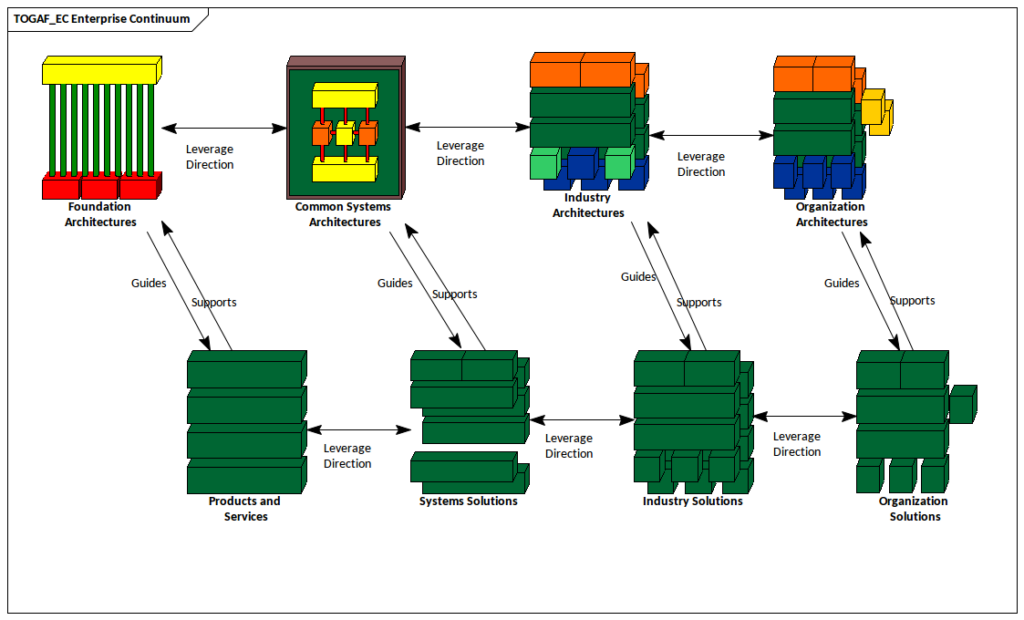Introduction:
In the ever-evolving landscape of enterprise architecture, where information is the currency and innovation is the key, the Enterprise Continuum stands as a guiding framework. It serves as a virtual repository, meticulously structuring the wealth of architectural artifacts that enterprises collect and curate. This continuum not only aids in organizing these artifacts but also provides a roadmap for their evolution, classification, and strategic reuse. In this article, we delve into the intricacies of the Enterprise Continuum, exploring its significance in the development of robust architectures.

Understanding the Enterprise Continuum:
At its core, the Enterprise Continuum is a conceptual framework designed to streamline the management of architectural assets within an enterprise. These assets encompass a broad spectrum, ranging from models and patterns to detailed architecture descriptions. The continuum recognizes the dynamic nature of these artifacts, acknowledging that they are not static entities but rather evolve over time in response to emerging challenges and technological advancements.
Classification of Artifacts:
One of the fundamental roles of the Enterprise Continuum is to provide a systematic method for classifying architectural artifacts. This classification is essential for organizing the vast array of materials that contribute to the enterprise’s architectural fabric. The continuum establishes categories and criteria for differentiation, ensuring that architects and stakeholders can easily locate and utilize the information they need.
Evolution of Artifacts:
The Enterprise Continuum sheds light on the lifecycle of architectural artifacts. It traces their evolution from conceptual ideas to concrete solutions. This evolutionary perspective is crucial for understanding the historical context of architectural decisions and for making informed choices in the present. By comprehending how different artifacts have transformed over time, architects can gain valuable insights into the rationale behind certain design choices and the lessons learned from past implementations.
Leveraging and Reusing Artifacts:
An inherent strength of the Enterprise Continuum lies in its ability to facilitate the strategic reuse of architectural artifacts. As enterprises face similar challenges and pursue analogous goals, the continuum becomes a treasure trove of proven solutions. Architects can draw upon existing models, patterns, and descriptions to accelerate the development of new architectures, promoting efficiency and consistency across projects. This reuse not only saves time and resources but also contributes to the establishment of standardized best practices within the enterprise.
Industry and Enterprise Synergy:
The Enterprise Continuum does not exist in isolation. It actively acknowledges the broader architectural landscape by incorporating influences from the industry at large. This ensures that enterprises are not operating within a vacuum but are instead aligned with industry standards, emerging trends, and innovative practices. By tapping into external sources, the continuum enhances the adaptive capacity of the enterprise, fostering a culture of continuous improvement and forward-thinking.
Conclusion:
In the intricate tapestry of enterprise architecture, the Enterprise Continuum stands as a reliable guide, illuminating the path towards effective management, classification, and reuse of architectural artifacts. As enterprises navigate the complexities of technological evolution, this continuum serves as a compass, ensuring that they leverage the collective wisdom of the past to build resilient and innovative architectures for the future. Embracing the Enterprise Continuum is not merely a best practice; it is a strategic imperative in the pursuit of architectural excellence and organizational success.
